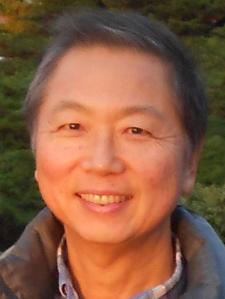
Nestor R. answered • 08/11/19
Professional experienced using mathematics and statistics
Let p=4n4+1
(p-1)/4 = n4
Any n ending with 2, 4, 6, 8 will have n4 end with 6 as the last digit. 4 * that number will have 4 as the last digit. Adding 1 will make the last digit = 5 so that p will be divisible by 5 making it NOT prime.
Any n (except for 1 as noted in the question) ending with 1, 3, 7, 9 will have n4 end with 1 as the last digit. 4 * that number will have 4 as the last digit. Adding 1 will make the last digit = 5 so that p will be divisible by 5 making it NOT prime.
Any number with 0 as the last digit will have n4 end with 0 as the last digit. 4 * that number will have 0 as the last digit. Adding 1 will make the last digit = 1. This number is not a square of any other number as it is (2n)2 + 1. The only possible factors will have a 1 or 9 as the last digit.
e.g. Let n=20. 204 = 160,000. 4*160,000 = 640,000. 640,000+1 = 640,001. If you add the digits making up p, in this example 6+4+0+0+0+1, they will not be divisible by 3, so a number ending in 9 will have to be itself a prime. 29 (a prime number) divides 640,001 exactly 22,069 times. The sum of the digits of a prospective factor ending with 1 cannot be divisible by 3, e.g. for 21 the sum of 2 and 1 is 3, the argument above applies. Therefore a potential factor ending in 1 will have to be itself prime, e.g. 11, 31, 41, 61, etc.
Any number with 5 as the last digit will have n4 end with 5 as the last digit. 4 * that number will have 0 as the last digit. Adding 1 will make the last digit = 1. This number is not a square of any other number as it is (2n)2 + 1. The only possible factors will have a 1 or 9 as the last digit.
e.g. Let n=185. 1854 = 1,171,350,625. 4*1,171,350,625 = 4.685,402,500. 4.685,402,500+1 = 4.685,402,501. If you add the digits making up p they will not be divisible by 3, so a number ending in 9 will have to be itself a prime. The sum of the digits of a prospective factor ending with 1 cannot be divisible by 3, e.g. for 21 the sum of 2 and 1 is 3, the argument above applies. Therefore a potential factor ending in 1 will have to be itself prime, e.g. 11, 31, 41, 181, etc.




